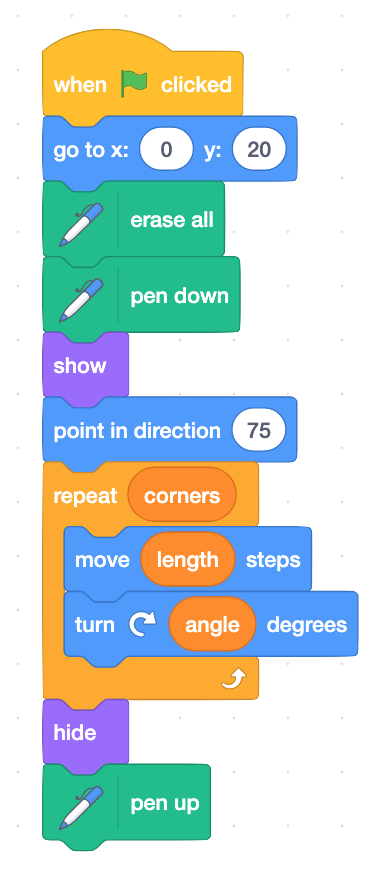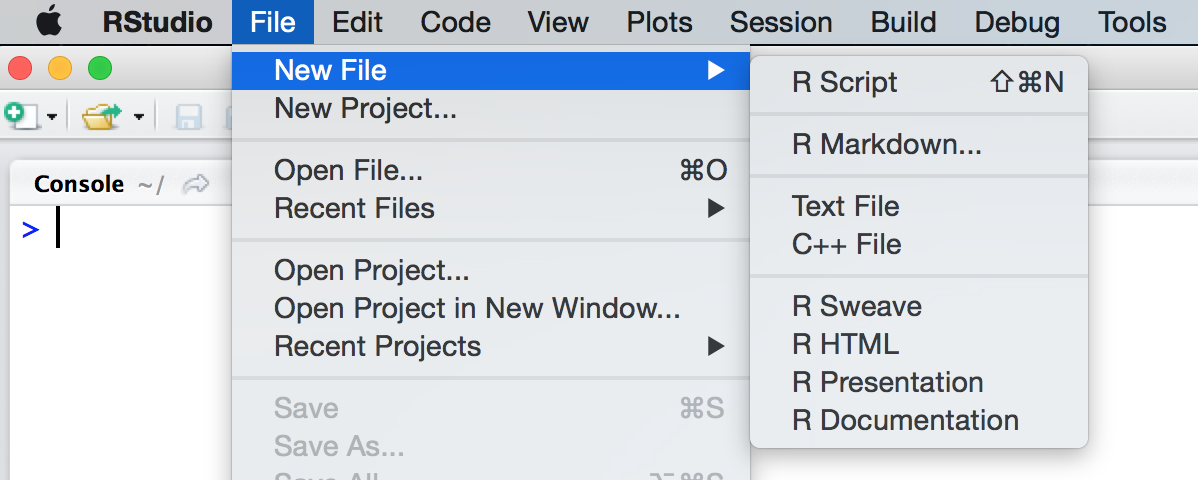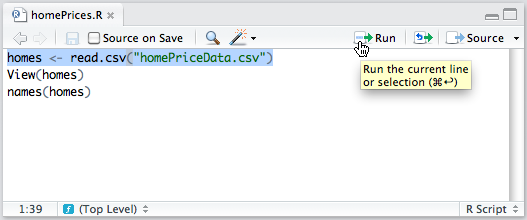- Decomposition
- breaking down a complex problem or system into smaller parts
- Pattern Recognition
- looking for similarities among and within problems
- Abstraction
- focusing on the important parts only, ignoring irrelevant detail
- Algorithm Design
- developing a step-by-step solution to the problem
February 26, 2020
Key parts of computational thinking
You can see these when drawing stars

To draw a star, you decompose in these steps:
- put the pen down
- hide the turtle
- repeat 5 times
- move 30 steps
- turn right 144 degrees
Abstraction: Input
Let’s forget about specific numbers.
In other words, let’s make an abstraction
corners: How many sides we will drawangle: how do you turn after each sideinitial_angle: initial anglelength: length of each side
Decomposition
Separating a complex problem into smaller, more manageable parts
Here we separate a complex figure into many smaller parts
Decomposition: Steps
Assuming that you know the input values, you need to:
- Point in the direction
initial_angle - repeat
cornertimes- draw a line of length
length - turn right
angledegrees
- draw a line of length
Pattern recognition
Is this problem similar to another?
Are there parts of this problem that are similar to each other?
Pattern recognition
In this case it is easy to see a pattern:
- draw a line of length
size - turn right
angledegrees
This pattern is repeated N times
You can do this easily with a loop
Algorithms: loops
We already know an algorithmic structure: loops
repeat (10)
which in R we write as
for(i in 1:10) {
...
}
Algorithms
The second algorithmic structure you can use are
- Sub-routines
- A group of specific steps grouped together
In R we represent sub-routines with functions
Functions
In Math and Informatics, a function is a “black box”

A rule to transform the input elements into an output
- e.g. logarithm of a number, length of a vector
The same input should produce always the same output
Notice that there may be more than one input element
Functions in R
In R functions are a type of data. We have
- numeric
- character
- logic
- factor
- formulas
- functions
- and others
To create a function we need to assign it to a variable
Function syntax
newFunc <- function(input) {
commands
commands
return(output)
}
The keyword return can be omitted
In that case the output is the result of the last command
Input values
- A function can get zero, one or several inputs
- They are mandatory, unless a default value is specified
- For example, if
my_func <- function(a, b=2) {return(a*b)}
my_func(3, 3)
## [1] 9
my_func(3)
## [1] 6
What if the input is wrong?
my_func()
## Error in my_func(): argument "a" is missing, with no default
my_func(1,2,3,4)
## Error in my_func(1, 2, 3, 4): unused arguments (3, 4)
Writing a function
Before writing the function we need to decide:
- the name of the function (it’s harder than it seems)
- which are the inputs
- what is the output
Then we can start writing the code
Practice
Let’s write a function to draw stars
First in Scratch, then in R
R Scripts
We use R scripts
Last semester we used RMarkdown
This semester we will use R Scripts
Be sure of understanding the difference
We are building R programs, no R documents
Last semester we built documents, like papers and slides
These are files with .Rmd extension
This semester we build programs and scripts
These are files with .R extension
Question What are “file extensions”?
Editing and Executing Code
To create a new file you use the File -> New File menu:

Executing a Single Line
To execute the line of source code where the cursor currently resides you press the Ctrl+Enter key (or use the Run toolbar button):

Executing Multiple Lines
We have seen two ways to execute multiple lines:
Select the lines and press the
Ctrl+Enterkey (or use the Run toolbar button)To run the entire document press the
Ctrl+Shift+Enterkey (or use the Source toolbar button).
Here Source means “run all code from the file”
Keyboard Shortcuts
There are many other shortcuts available. Some of the more useful ones are:
Ctrl+Shift+N- New document
Ctrl+O- Open document
Ctrl+S- Save active document
Ctrl+1- Move focus to the Source Editor
Ctrl+2- Move focus to the Console
Homework 3

Using R Turtle Graphics, write programs to draw:
- A house
- A person
- A pentagon
- A polygon of N sides
Filename must be homework3.R.
Send it to andres.aravena+cmb@istanbul.edu.tr
Write your student number in the email’s Subject